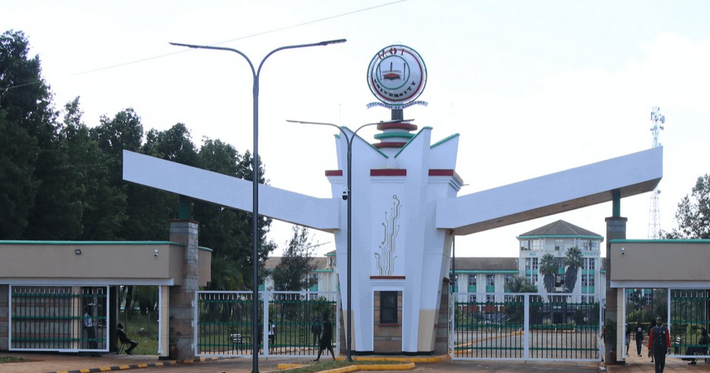

Moi University Council has moved to assure Kenyans that it is committed to resolving the woes facing the troubled institution.
Chairman of the council, Dr. Humphrey Kimani Njuguna, said the challenges cannot be surmounted immediately, noting that ongoing engagements with various stakeholders are designed to ensure the long-term stability and sustainability of Moi University.
“These engagements need time to bear any fruit,” Njuguna said in a statement to newsrooms.
He said recent closure, the subsequent reopening, and perceived uncertainty caused by staff industrial action are the culmination of long-standing challenges faced by the university.
Njuguna said the major challenge at Moi University is inadequate finances because the institution, for the past decade or so, has not been able to raise revenues sufficient to meet the expenditures.
He explained that the inability to raise adequate revenues is driven principally by two factors.
“First, there has been a progressive reduction in government grants through guaranteed funding by way of capitation,” he said.
He noted that since the introduction of the differentiated unit cost model of university funding, the government has progressively reduced the capitation grants from an anticipated 80 percent of the cost of an academic program to about 38 percent at the time of its replacement.
“The 42 percent gap in revenue was supposed to be met through internal revenues. The university relied on the privately sponsored student programme to meet this gap. The 2016 KCSE reforms eliminated this revenue stream, as all students who matriculated received government sponsorship,” he added.
“Second, the university has also witnessed a significant decline in student enrolment in its undergraduate programmes that form the bulk of its revenue base,” he said.
He noted that these programmes were either government-sponsored or privately sponsored.
“For example, for the 2024-25 academic year, about 6,000 first-year students were placed in the institution, as against a declared capacity of over 14,000 students, and over 47,000 applicants to the university's undergraduate programmes,” he explained.
“The university thus has excess capacity to run undergraduate programmes, and on realising this mismatch, the council engaged the relevant government entities on modalities of utilising this excess capacity,” he added.
Njuguna said solutions to the question are being actively considered by the relevant agencies in government but can only be implemented in the 2025-26 academic year.
He added that the mismatch in revenue and expenditure created a difficult conundrum and compounded an increasingly dire financial situation.
Njuguna pointed out that the university has received assurances from the Ministry of Education, the National Treasury, the Executive Office of the President, local leadership, and the National Assembly Committee on Education that an initial financial support of about Sh3.5 billion will be availed to meet the gap and other pressing challenges.
He added that reports suggesting that over Sh2.2 billion was squandered in capital development projects are inaccurate and misleading.
He explained that the quoted amount is the total cost of the projects under scrutiny, some of which have not kicked off and some of which the requisite funding from the government has not been disbursed.
He said the council remains committed to the resumption of normalcy of the university academic calendar, and consultations are ongoing with staff unions for a mutually beneficial outcome that considers student welfare.



 © The Star 2024. All rights reserved
© The Star 2024. All rights reserved